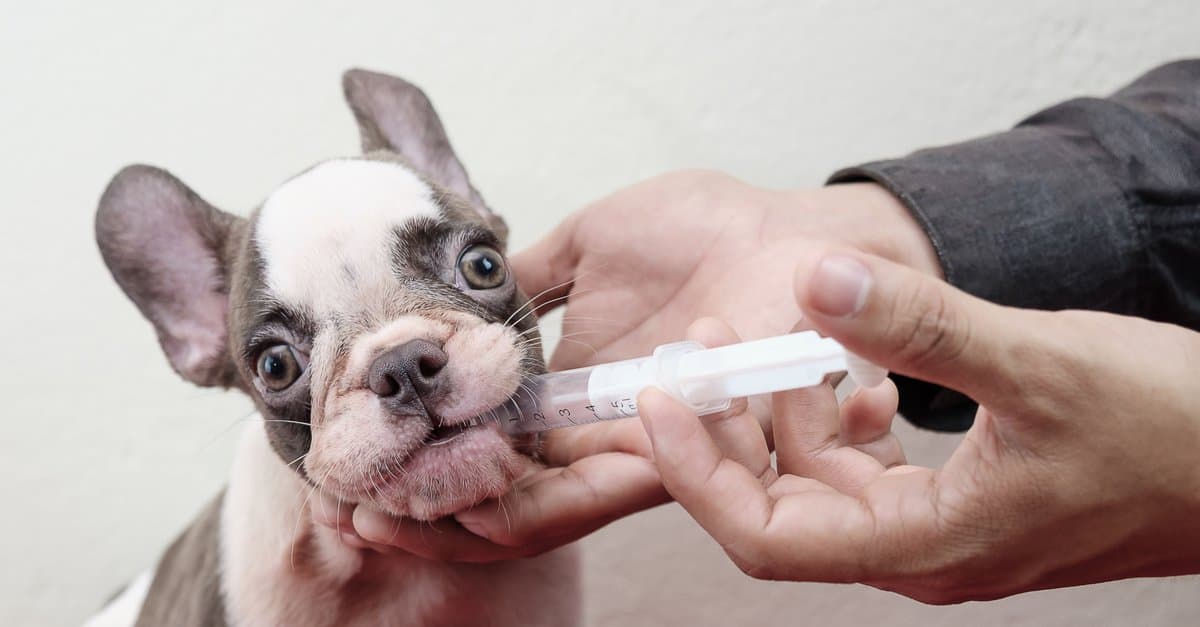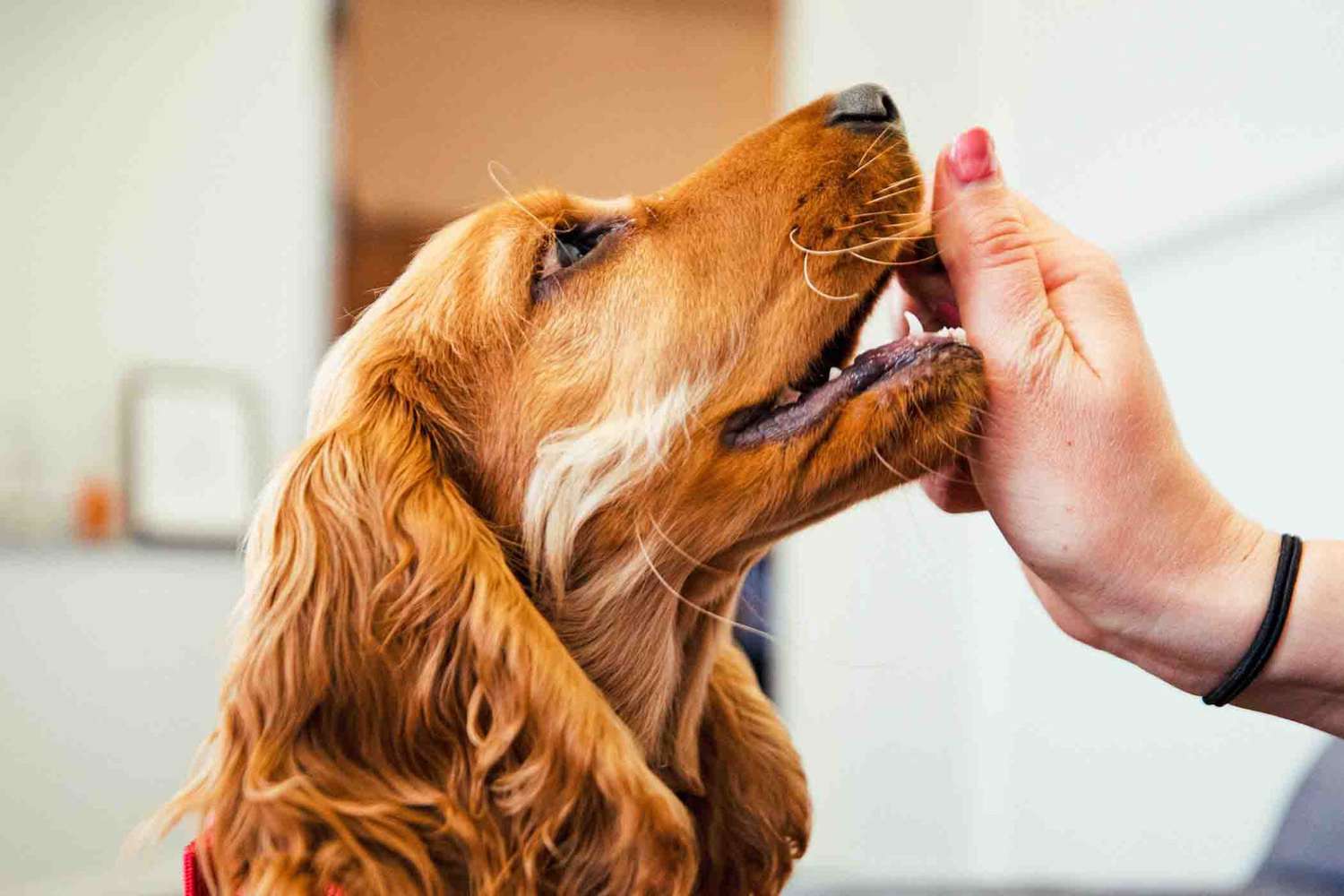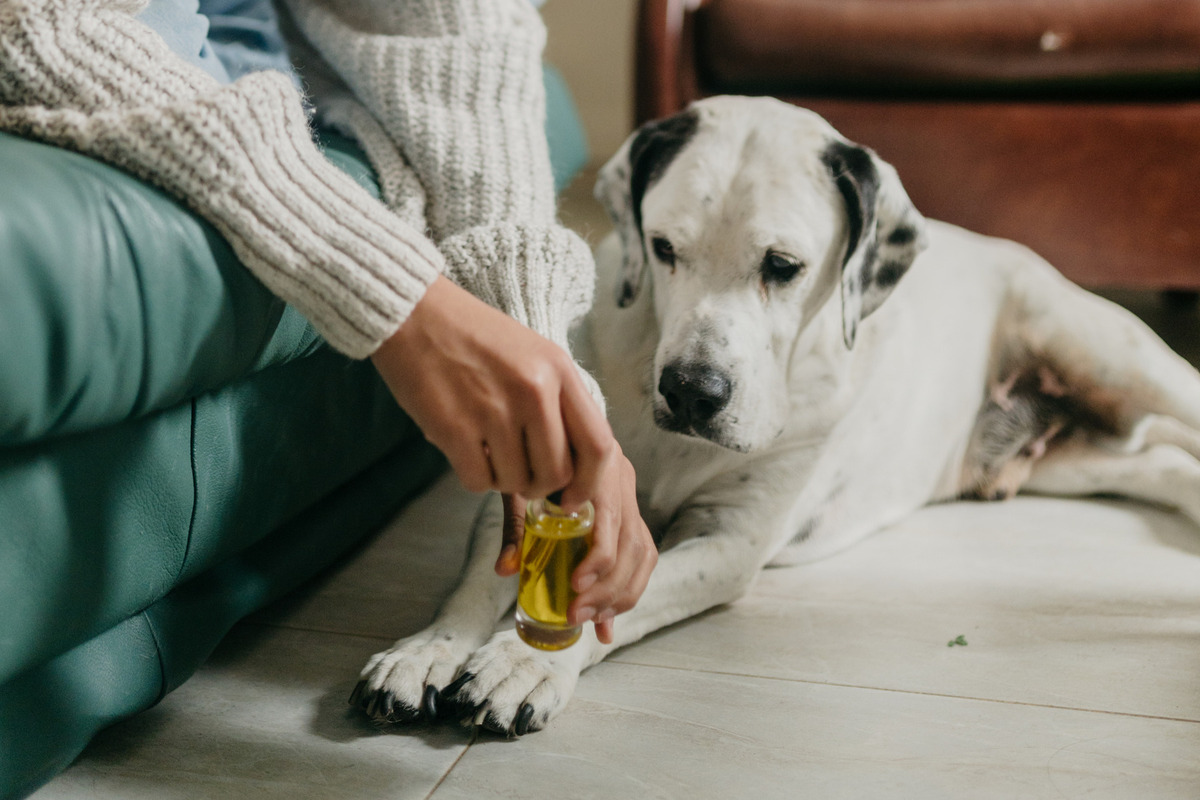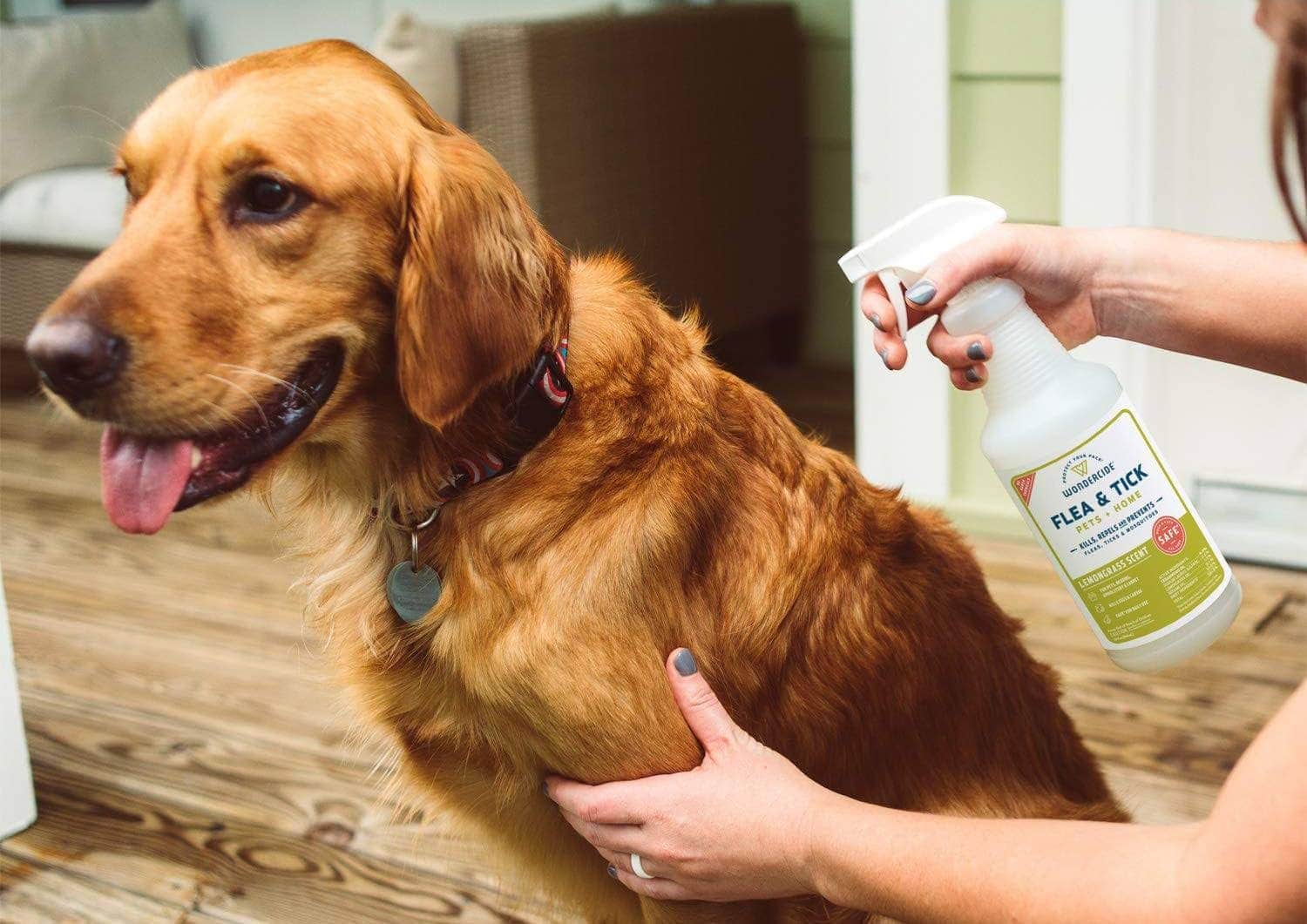Home>Health & Wellness>Common Health Issues>How Much Garlic Can You Give A Dog For Fleas


Common Health Issues
How Much Garlic Can You Give A Dog For Fleas
Modified: February 21, 2024
Learn about common health issues in dogs and how much garlic you can give your dog for fleas. Find out the safe and effective ways to treat your dog's flea problems.
(Many of the links in this article redirect to a specific reviewed product. Your purchase of these products through affiliate links helps to generate commission for Pawsomeoldies.com, at no extra cost. Learn more)
Table of Contents
Introduction
Garlic has been a staple in human diets for centuries, renowned for its distinct flavor and numerous health benefits. However, when it comes to our furry companions, the use of garlic has sparked considerable debate within the pet community. While some pet owners advocate for its potential to repel fleas and boost overall health, others express concerns about its safety for dogs.
In this article, we will delve into the topic of using garlic as a natural remedy for flea control in dogs. We will explore the potential benefits of garlic for dogs, the associated risks and concerns, and the safe dosage to consider. Additionally, we will discuss alternative flea control methods to help you make informed decisions about your pet's well-being.
As responsible pet owners, it's crucial to prioritize our dogs' health and safety. By gaining a comprehensive understanding of the implications of using garlic for flea control, we can make informed choices that align with our pets' best interests. So, let's embark on this insightful journey to uncover the truths and myths surrounding the use of garlic for flea prevention in dogs.
The Benefits of Garlic for Dogs
Garlic, known for its pungent aroma and distinct flavor, has been celebrated for its potential health benefits for both humans and, to some extent, dogs. When used in moderation and under the guidance of a veterinarian, garlic may offer several potential advantages for canine companions.
-
Natural Flea Repellent: One of the most touted benefits of garlic for dogs is its potential as a natural flea repellent. The sulfur compounds in garlic, particularly allicin, are believed to create an odor that fleas find repulsive. While there is anecdotal evidence supporting this claim, it's important to note that scientific research on the effectiveness of garlic as a flea deterrent in dogs is limited.
-
Antioxidant Properties: Garlic contains antioxidants that may help combat oxidative stress and support the immune system in dogs. These antioxidants, such as quercetin and selenium, have been associated with potential health benefits, including anti-inflammatory effects and protection against cellular damage.
-
Cardiovascular Support: In some cases, garlic has been suggested to have cardiovascular benefits for dogs. It is believed to help regulate cholesterol levels and promote heart health. However, it's crucial to emphasize that excessive consumption of garlic can pose serious risks to a dog's cardiovascular system, making it essential to adhere to safe dosage guidelines.
-
Potential Antibacterial and Antifungal Properties: Garlic is known for its potential antibacterial and antifungal properties, which may offer some support for a dog's immune system. However, it's important to exercise caution, as excessive consumption of garlic can lead to adverse effects, including damage to red blood cells.
While these potential benefits may seem promising, it's imperative for dog owners to approach the use of garlic with caution. The risks associated with garlic consumption in dogs should not be overlooked, and any decision to incorporate garlic into a dog's diet should be made in consultation with a veterinarian.
In the next section, we will delve into the risks and concerns associated with feeding garlic to dogs, shedding light on the potential drawbacks that warrant careful consideration.
Risks and Concerns of Feeding Garlic to Dogs
Feeding garlic to dogs, despite its potential benefits, raises significant risks and concerns that cannot be overlooked. While garlic has been touted as a natural flea repellent and a source of potential health benefits for dogs, it is crucial for pet owners to be aware of the potential dangers associated with its consumption.
One of the primary concerns regarding garlic is its potential to cause oxidative damage to a dog's red blood cells. Garlic contains compounds such as thiosulfates, which can lead to the destruction of red blood cells, a condition known as Heinz body anemia. This can result in symptoms such as weakness, pale gums, lethargy, and even more severe complications if left untreated. Additionally, the adverse effects of garlic on a dog's red blood cells can lead to hemolytic anemia, a condition characterized by the accelerated destruction of red blood cells, potentially leading to life-threatening consequences.
Furthermore, the tolerance for garlic consumption can vary widely among individual dogs. While some dogs may exhibit sensitivity to even small amounts of garlic, others may seemingly tolerate it without immediate adverse effects. This variability makes it challenging for pet owners to gauge the potential risks accurately, emphasizing the need for caution and informed decision-making.
It's important to note that the toxic effects of garlic are cumulative, meaning that repeated or prolonged exposure to garlic can heighten the risk of adverse effects in dogs. Even small, regular doses of garlic over time can contribute to the gradual buildup of toxic compounds in a dog's system, potentially leading to serious health complications.
Another concern related to feeding garlic to dogs is the potential interaction with certain medications. Garlic contains compounds that may interfere with the efficacy of medications or exacerbate underlying health conditions in dogs. This underscores the importance of consulting with a veterinarian before introducing garlic or any new dietary supplement into a dog's regimen, especially if the dog is currently on medication or has preexisting health issues.
In light of these risks and concerns, it is crucial for pet owners to approach the use of garlic for dogs with utmost caution. While the potential benefits of garlic may seem appealing, the associated risks, particularly the potential for severe adverse effects on a dog's health, warrant careful consideration and informed decision-making.
In the subsequent section, we will explore the use of garlic as a natural flea repellent for dogs, shedding light on its effectiveness and safe dosage considerations.
Using Garlic to Repel Fleas in Dogs
The use of garlic as a natural flea repellent for dogs has been a topic of considerable interest and debate among pet owners. Proponents of this approach advocate for the potential of garlic to repel fleas and ticks, offering a chemical-free alternative to conventional flea control methods. However, it is essential to approach this practice with caution and a thorough understanding of the associated risks and considerations.
Advocates of using garlic as a flea repellent often highlight the presence of sulfur compounds in garlic, particularly allicin, which is believed to create an odor that fleas find repulsive. This purported repellent effect has led to the inclusion of garlic in homemade flea repellent solutions and dietary supplements for dogs. While anecdotal evidence and personal accounts may support the effectiveness of garlic in repelling fleas, it is important to note that scientific research on this specific application is limited.
When considering the use of garlic for flea control in dogs, it is crucial to weigh the potential benefits against the known risks and concerns associated with garlic consumption. As highlighted in the previous section, the ingestion of garlic, even in small amounts, can pose significant health risks to dogs, particularly in relation to the potential damage to red blood cells and the risk of Heinz body anemia. Therefore, the decision to use garlic as a flea repellent should be made with careful consideration of the potential risks and in consultation with a veterinarian.
Furthermore, the effectiveness of garlic as a flea repellent may vary among individual dogs. Factors such as the dog's size, age, overall health, and sensitivity to garlic can influence the outcomes of using garlic for flea control. Additionally, the concentration and form of garlic used, whether fresh, powdered, or as a supplement, can impact its potential effectiveness as a flea repellent. It is important to recognize that while some dogs may show apparent resistance to fleas with the use of garlic, others may not experience the same level of efficacy.
In light of these considerations, it is essential for pet owners to approach the use of garlic as a flea repellent for dogs with caution and a thorough understanding of the potential risks involved. While the idea of a natural, chemical-free flea control method may be appealing, the safety and well-being of the dog should always take precedence. In the following section, we will delve into the safe dosage considerations when using garlic for dogs, providing guidance on how much garlic can be safely given to dogs for potential flea control.
How Much Garlic Can You Safely Give to Your Dog
Determining the safe dosage of garlic for dogs is a critical consideration for pet owners who are exploring its potential use for flea control or other perceived health benefits. While garlic has been associated with certain health advantages, it is essential to approach its administration to dogs with utmost caution due to the potential risks of garlic toxicity.
The general consensus among veterinarians and animal health experts is that the safe dosage of garlic for dogs is extremely low, and in many cases, its use is discouraged altogether. The toxic compounds present in garlic, particularly thiosulfates, can lead to oxidative damage to a dog's red blood cells, potentially resulting in severe health complications. As a result, precise guidelines for safe garlic consumption in dogs are crucial to minimize the risk of adverse effects.
In practice, the safe dosage of garlic for dogs is often cited as no more than 10 to 15 grams of garlic per 20 kilograms of body weight per day. However, it is important to emphasize that even at these seemingly low levels, the potential risks of garlic toxicity cannot be disregarded. Given the variability in individual dogs' sensitivity to garlic and the cumulative nature of its toxic effects, pet owners are advised to exercise extreme caution and consult with a veterinarian before considering the use of garlic in their dog's diet.
Furthermore, it is essential to consider the form in which garlic is administered to dogs. Fresh garlic, garlic powder, and commercial garlic supplements may vary in their potency and concentration of toxic compounds. As a result, precise measurements and careful monitoring are imperative to ensure that dogs are not exposed to excessive amounts of garlic, which could lead to detrimental health consequences.
In light of the potential risks associated with garlic consumption in dogs, many veterinarians recommend seeking alternative flea control methods that do not pose the same level of risk to a dog's health. By prioritizing the safety and well-being of dogs, pet owners can explore safer, vet-approved flea control options that effectively address flea infestations without compromising their pets' health.
Ultimately, the safe dosage of garlic for dogs remains a contentious and highly debated topic within the veterinary and pet care communities. While some pet owners may advocate for the potential benefits of garlic, it is crucial to approach its use with a thorough understanding of the associated risks and to prioritize the guidance and expertise of qualified veterinarians when making decisions about a dog's diet and overall well-being.
Alternative Flea Control Methods for Dogs
When it comes to safeguarding our canine companions from the nuisance and potential health risks associated with fleas, exploring alternative flea control methods can offer effective solutions without the potential risks associated with certain natural remedies. Here are some vet-approved flea control methods that prioritize the safety and well-being of dogs:
-
Topical Flea Treatments: Veterinary-recommended topical flea treatments, such as spot-on solutions and flea control collars, offer targeted and long-lasting protection against fleas. These products contain active ingredients that disrupt the flea life cycle, effectively eliminating existing fleas and preventing reinfestation. When used according to the manufacturer's instructions and under the guidance of a veterinarian, topical flea treatments provide a reliable and safe approach to flea control.
-
Oral Flea Preventatives: Oral flea preventatives, available in the form of chewable tablets or flavored treats, provide systemic protection against fleas. These products contain insect growth regulators or medications that target fleas at various stages of their life cycle, preventing infestations and reducing the risk of flea-borne diseases. Administering oral flea preventatives as prescribed by a veterinarian ensures comprehensive and convenient flea control for dogs.
-
Regular Grooming and Cleaning: Maintaining a regular grooming and cleaning routine for dogs can significantly contribute to flea control. Regular baths using veterinarian-approved flea shampoos, along with thorough combing and brushing, help remove fleas, eggs, and debris from the dog's coat, reducing the likelihood of infestations. Additionally, keeping the dog's living environment clean, including bedding, carpets, and outdoor areas, helps minimize flea populations and supports effective flea control.
-
Environmental Treatments: Addressing fleas in the dog's environment is crucial for comprehensive flea control. Using veterinarian-recommended environmental treatments, such as premise sprays and foggers, helps eliminate fleas and their developmental stages in the home environment. Targeting areas where fleas are likely to thrive, such as carpets, upholstery, and outdoor resting areas, helps break the flea life cycle and prevents reinfestation.
-
Regular Veterinary Check-ups: Scheduling regular veterinary check-ups for dogs allows for proactive flea control and monitoring. Veterinarians can assess the dog's overall health, recommend appropriate flea control measures, and address any existing flea-related concerns. Additionally, veterinarians can provide guidance on safe and effective flea control methods tailored to the dog's specific needs and health status.
By prioritizing the use of vet-approved flea control methods, pet owners can effectively safeguard their dogs from fleas while minimizing the potential risks associated with certain natural remedies. Consulting with a veterinarian and adhering to recommended flea control practices ensures that dogs receive comprehensive and safe protection against fleas, promoting their overall well-being and comfort.
Conclusion
In conclusion, the use of garlic as a natural remedy for flea control in dogs presents a complex and nuanced landscape that requires careful consideration and informed decision-making. While garlic has been associated with potential benefits, including its purported flea-repelling properties and certain health advantages, the risks and concerns associated with its consumption in dogs cannot be overlooked.
The potential for garlic to cause oxidative damage to a dog's red blood cells, leading to serious health complications such as Heinz body anemia and hemolytic anemia, underscores the critical importance of exercising caution when considering its use for dogs. The cumulative nature of garlic toxicity and the variability in individual dogs' sensitivity to garlic further emphasize the need for precise dosage guidelines and veterinary oversight.
While the idea of a natural, chemical-free flea control method may be appealing, the safety and well-being of dogs should always take precedence. As such, pet owners are encouraged to explore alternative, vet-approved flea control methods that prioritize the effective and safe protection of their canine companions. Topical flea treatments, oral flea preventatives, regular grooming and cleaning, environmental treatments, and regular veterinary check-ups offer comprehensive and reliable approaches to flea control without compromising a dog's health.
Ultimately, the decision to incorporate garlic into a dog's diet or flea control regimen should be made in consultation with a veterinarian, taking into account the dog's individual health status, potential sensitivities, and overall well-being. By prioritizing the guidance and expertise of qualified veterinarians, pet owners can make informed choices that align with their dogs' best interests, ensuring that flea control measures are both effective and safe.
As responsible pet owners, it is essential to remain vigilant and proactive in safeguarding our dogs from fleas while prioritizing their health and comfort. By staying informed, seeking professional guidance, and embracing safe and vet-approved flea control methods, we can provide our canine companions with the protection they need, promoting a happy, healthy, and flea-free lifestyle for our beloved pets.














